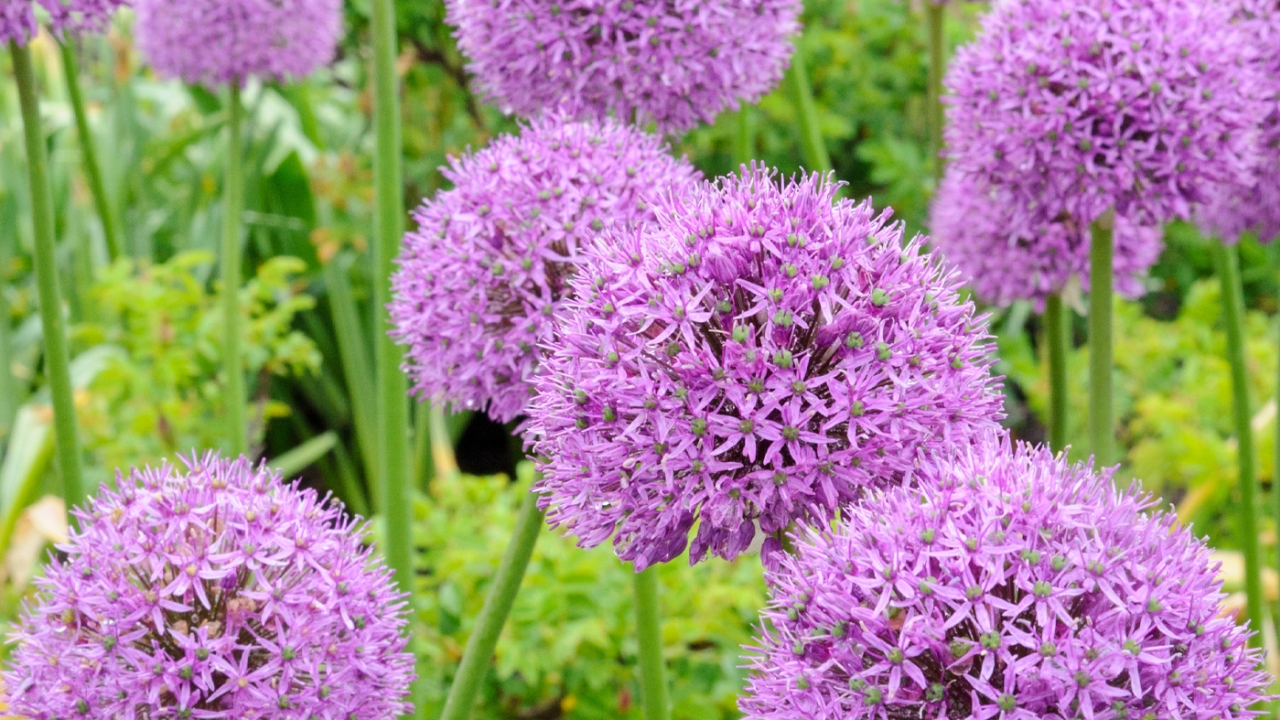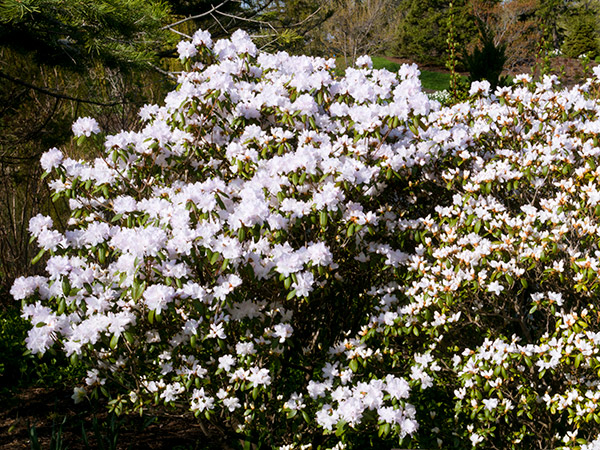

Rhododendron
Rhododendron (azalea)
Rhododendrons are popular woody shrubs grown for their spectacular spring flowers. Within this genus, taxonomists estimate that there are between 800 and 1,000 species. They are native to North America, Europe, Australasia, Asia, southwest China, Tibet, Myanmar, northern India, and New Guinea. In their natural habitats, the plants vary in size from creeping at ground level to 80 feet tall. The genus comprises five main groups: large-leaf (elepidote) evergreen rhododendrons, small-leaf (epidote) evergreen rhododendrons, Vireya rhododendrons, evergreen azaleas, and deciduous azaleas.
Large-leaf (elepidote) evergreen rhododendrons are typically low, mound-forming shrubs. This group includes the so-called “ironclad” plants bred from R. catawbiense, R. ponticum and R. caucasicum, as well as Fortunei and Yakushimanum hybrids. Small-leaf (lepidote) rhododendrons include some of the hardiest of all evergreen plants in the genus. Vireya rhododendrons are evergreen but frost tender, generally grown in a greenhouse. Deciduous and evergreen azaleas are small to medium-leaved shrubs that bear a profusion of flower trusses. They are commonly known to gardeners as azaleas. Examples of deciduous azaleas are Ghent hybrids, Knap Hill-Exbury hybrids, Mollis hybrids, and Occidental hybrids. Evergreen azaleas include Glenn Dale hybrids, Indica hybrids, Kaempferi hybrids, Robin Hill hybrids, and several others.
Ornamental Features
There are several reasons to plant these early blooming shrubs. They offer an assortment of cheery flowers in spring, fall color on deciduous plants, and winter interest on evergreen types. Northern lights azalea produces bright, fragrant flowers in shades of orchid, orange, white, yellow, or rose on plants that have a nice compact shape, reliable winter hardiness, and bronze-orange fall color. They brighten a woodland garden often before the trees fully leaf out.
Cultivation
Select a spot that offers dappled shade. Avoid full sun and south- or west-facing sites, where winter winds can dry evergreen leaves. The site should have well-drained, acidic soil amended with large amounts of leafy, humus-rich organic matter. Excellent drainage is crucial for rhododendrons, especially in areas with heavy clay soils, such as northeastern Illinois. The roots require an exceptional amount of air in the soil, so it should be loose, porous, and organically rich, with a pH range of about 4.5 to 6.0. A standard planting mix consists of equal parts of good top soil, peat moss, sand, and shredded bark. A soil test can help determine the pH of your soil before you plant. If the soil acidity is not in the preferred range, add elemental sulfur and/or an iron chelate to lower the pH. Find these products and soil test kits at garden centers or online.
When the plants are finished flowering, gently pull off the spent blossoms. New shoots form at the base of the flower trusses. To increase flower production for the following year, pinch off one-half of this new green growth when it is at least 1-inch long. If plants require shaping, prune right after flowering.
Cultivars
There are thousands of hybrids! Compact Korean azalea (Rhododendron yedoense var. poukhanense 'Compacta') is hardy to Zone 4, as is Orchid Lights rhododendron. Molly Fordham blooms in early April. P.J.M. rhododendrons are among the most reliable and commonly sold rhododendrons in the Chicago area. Visit in April and May, and you’ll find dozens of cultivars bursting with color at the Garden.
Ecological Benefits
Flowers attract butterflies and bees.
Companion Plants
Plant partners include mountain laurel (Kalmia latifolia), Japanese andromeda (Pieris japonica), summersweet (Clethra alnifolia), hydrangea macrophylla, Fothergilla, hostas, ferns, and spring-blooming bulbs.



